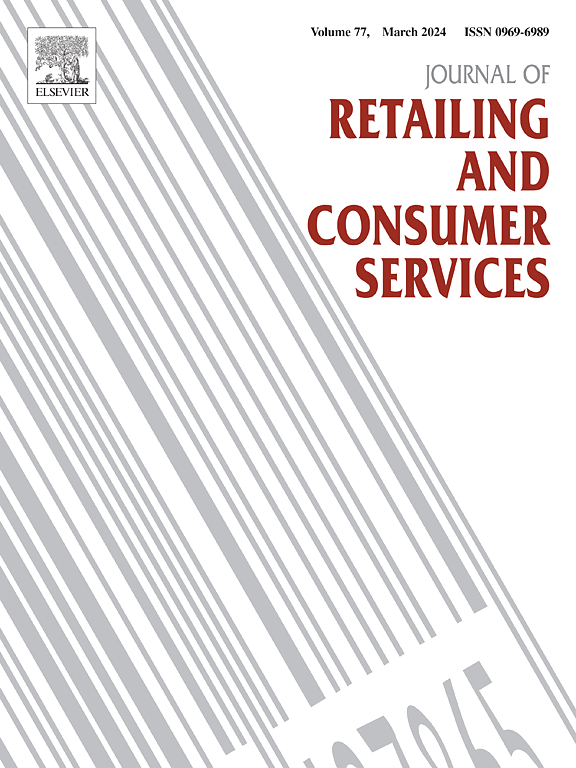超越技术:技术-组织-环境-人因素在新能源汽车自动驾驶应用中的作用
IF 13.1
1区 管理学
Q1 BUSINESS
Journal of Retailing and Consumer Services
Pub Date : 2025-10-02
DOI:10.1016/j.jretconser.2025.104552
引用次数: 0
摘要
虽然之前的自动驾驶采用研究主要应用传统模型(TAM, UTAUT, TPB),侧重于个人层面的因素,但本研究开创性地应用了技术-组织-环境-人类(TOEH)框架,以揭示以前未确定的不对称影响模式和矛盾关系。与现有研究将感知到的利益和风险视为连续体的两端不同,我们证明它们通过具有不同前因和后果的不同平行认知途径运作。通过分析来自445名中国新能源汽车用户的数据,我们发现了三个挑战现有采用理论的新发现:首先,我们发现了一种“双效应现象”,即技术和公司因素增强了感知收益,但未能减轻感知负面影响,这与对称影响的假设相矛盾。其次,我们揭示了一个“基础设施准备悖论”,其中环境因素与直觉相反,增加了感知到的负面影响,而不是好处。第三,只有驱动因素表现出预期的双向影响,增利减负,凸显了人机互补的独特重要性。此外,我们通过对实际购买行为的研究,进一步扩展了基于意图的研究,发现感知利益仅通过意图的完全中介影响购买,而感知消极既有直接影响,也有间接影响,揭示了积极和消极感知的不同评价途径。我们的重要性-绩效图分析提供了先前研究中缺乏的可操作的见解:增强感知利益比减轻负面影响产生更大的影响(重要性:0.152对- 0.040)。这些发现需要重新定义采用框架,以适应不对称路径、矛盾的环境影响和双重感知处理,为制造商和政策制定者加速自动驾驶采用提供战略指导。本文章由计算机程序翻译,如有差异,请以英文原文为准。
Beyond technology: Role of technology-organization-environment-human factors in autonomous driving adoption for new energy vehicles
While prior autonomous driving adoption research has predominantly applied traditional models (TAM, UTAUT, TPB) focusing on individual-level factors, this study pioneers the application of the Technology-Organization-Environment-Human (TOEH) framework to reveal previously unidentified asymmetric influence patterns and paradoxical relationships. Unlike existing studies that treat perceived benefits and risks as opposite ends of a continuum, we demonstrate they operate through distinct, parallel cognitive pathways with different antecedents and consequences. Analyzing data from 445 Chinese new energy vehicle users, we uncover three novel findings that challenge established adoption theories: First, we identify a “dual-effect phenomenon” where technology and company factors enhance perceived benefits but fail to mitigate perceived negatives—contradicting assumptions of symmetric influence. Second, we reveal an “infrastructure readiness paradox” where environmental factors counterintuitively increase perceived negatives rather than benefits. Third, only driver factors exhibit the expected bidirectional influence, enhancing benefits while reducing negatives, highlighting the unique importance of human-machine complementarity. Furthermore, we extend beyond intention-based studies by examining actual purchase behavior, discovering that perceived benefits influence purchase only through full mediation by intention, while perceived negatives exert both direct and indirect effects—revealing distinct evaluation pathways for positive versus negative perceptions. Our Importance-Performance Map Analysis provides actionable insight absent from prior research: enhancing perceived benefits yields significantly greater impact than mitigating negatives (importance: 0.152 vs. −0.040). These findings necessitate reconceptualizing adoption frameworks to accommodate asymmetric pathways, paradoxical environmental effects, and dual perception processing, offering strategic guidance for manufacturers and policymakers in accelerating autonomous driving adoption.
求助全文
通过发布文献求助,成功后即可免费获取论文全文。
去求助
来源期刊
CiteScore
20.40
自引率
14.40%
发文量
340
审稿时长
20 days
期刊介绍:
The Journal of Retailing and Consumer Services is a prominent publication that serves as a platform for international and interdisciplinary research and discussions in the constantly evolving fields of retailing and services studies. With a specific emphasis on consumer behavior and policy and managerial decisions, the journal aims to foster contributions from academics encompassing diverse disciplines. The primary areas covered by the journal are:
Retailing and the sale of goods
The provision of consumer services, including transportation, tourism, and leisure.

 求助内容:
求助内容: 应助结果提醒方式:
应助结果提醒方式:


